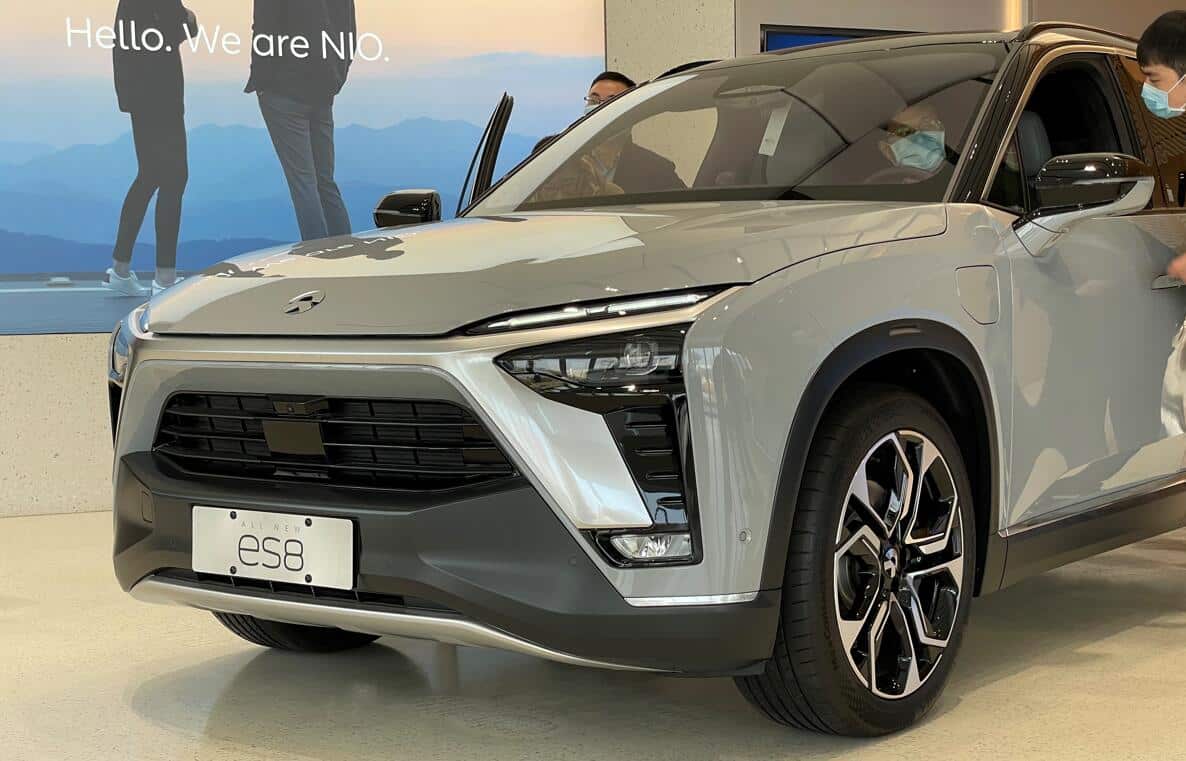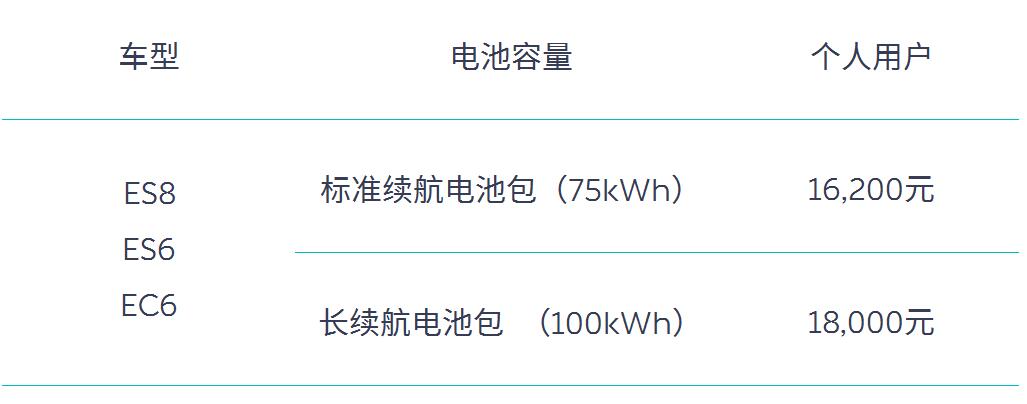China's subsidies for NEVs will be reduced by 30 percent next year, and Tesla decided last week to let consumers immediately bear the cost increase.
(Image credit: CnEVPost)
China announced plans in early 2020 to reduce subsidies for new energy vehicles (NEVs) each year, and as 2022 approaches, automakers will need to consider how to smooth out their pricing policies at the end of the year.
Nio today announced its subsidy program for consumers who purchase its vehicles this month, allowing those who place orders this year but don't get delivery until early next year to continue to receive the current subsidy amount.
Customers who pay a deposit for the ES8, ES6 and EC6 by December 31, 2021, and receive delivery by March 31, 2022, will get the subsidy at the Chinese national subsidy rate for 2021, Nio said in a statement posted on its app.
Information released by the company shows that for individual customers who purchase a model with the 75-kWh standard range battery pack, they will still be eligible for a subsidy of RMB 16,200 ($2,545).
If a customer buys a model with a 100-kWh long-range battery pack, they will still receive a subsidy of RMB 18,000.
As for consumers of Nio's flagship sedan ET7, which will be delivered in the first quarter of next year, the subsidy they can enjoy will be known when the model is open for official reservations.
If the buyers are companies, then the amount of subsidy they can enjoy is 70 percent of that of individual customers, according to Nio.
Nio said the decision was made in part due to the company's recent production line upgrades that have delayed the overall delivery schedule and may have affected the timing of delivery for some customers.
China's Ministry of Finance released plans on April 23, 2020, for the country's subsidies for NEVs to be reduced each year, calling for the amount of subsidies to be reduced by 10 percent, 20 percent and 30 percent each year from 2020-2022, respectively, from the previous year.
The subsidies available to car buyers are based on when the new car gets its license plate, which means that if consumers place an order at the end of the year but get it delivered next year, the amount of state subsidies they can enjoy will be reduced by 30 percent compared to 2021.
The plan also mentions that from 2020 onwards, the pre-subsidy selling price of new energy passenger vehicles must be below RMB 300,000 (including 300,000 yuan) to enjoy subsidies.
However, in order to encourage the development of battery swap as a new business model, vehicles supporting battery swap are not subject to this requirement. Therefore, even though the starting prices of all current Nio models are higher than RMB 300,000, consumers can still enjoy the national subsidies.
In fact, with the expected reduction in state subsidies coming next year, Tesla already took action last week, only they did so by making consumers bear the increased costs immediately.
On November 24, information on Tesla's Chinese website showed that the latest price for the entry-level China-made Model 3 - the rear-wheel-drive version - became RMB 255,652, an increase of RMB 4,752 from the previous price of RMB 250,900.
Tesla's website clearly lists this as the post-subsidy price, stating that the model's pre-subsidy price is RMB 266,740, with private customers receiving RMB 15,840 in state subsidies in China and RMB 11,088 for new energy passenger vehicles purchased for corporate use or used for operation.
Customers who add features to their vehicles that result in a price higher than RMB 300,000 will not be eligible for these purchase subsidies, Tesla said.
The price hike is based on the decline of China's NEV subsidies next year, as owners who place orders now will not receive deliveries until 2022, a Tesla source told nbd.com.cn.
Owners who have placed orders before November 24 will not be affected for now, the source said.


